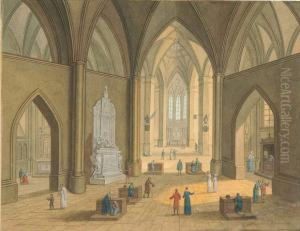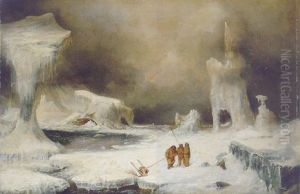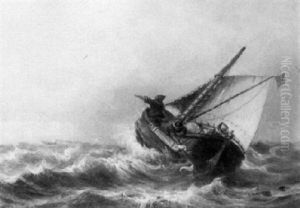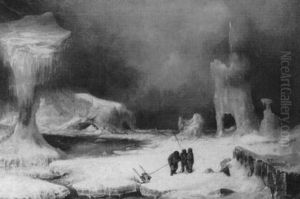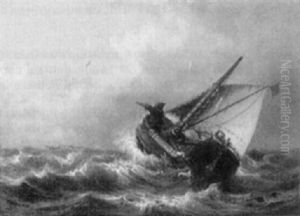Johann Jacob Witte Paintings
Johann Jacob Witte was a German architect and painter, born in the year 1800. His contributions to the world of art and architecture were primarily during the 19th century, a period that was characterized by rapid industrialization and various artistic movements such as Romanticism and Neoclassicism. Witte's work, however, remains relatively obscure, and he is not as widely recognized as some of his contemporaries.
Witte's career path was shaped by the artistic milieu of his time, which encouraged a blend of classical and innovative approaches. Though detailed records of his personal life and training are not extensively documented, it is known that he was active in Germany and contributed to the architectural landscape of the period. His style would have likely reflected the prevailing tastes of the era, which often looked back to classical antiquity for inspiration while also incorporating more modern elements and techniques.
Despite the lack of detailed biographical information, Witte's legacy as an architect and painter would have been linked to the broader trends in German art and architecture during his lifetime. His architectural works would have included public and private buildings, which may have ranged from civic structures to residences. As a painter, he would have created works that captured the sensibilities of his era, perhaps focusing on landscapes, historical themes, or portraits, all of which were popular with patrons and the art market of the time.
Johann Jacob Witte's death in 1861 marked the end of his contributions to the arts. His life's work would have been influenced by the transformations occurring in Europe, particularly in Germany, as it experienced cultural shifts and the rise of new artistic movements. Although Witte is not a household name, his role as an architect and painter would have added to the cultural fabric of the 19th century, and his works, if preserved, would offer insights into the aesthetic and stylistic preferences of his era.
